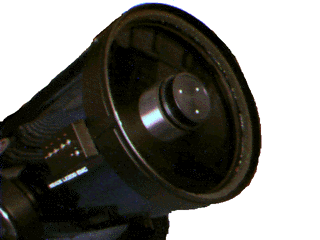
Unlike the Kendrick system this plan has no provision for preventing dew on your finder(s) or eyepieces. But it would be trivial to add such a capability if you find it necessary.
Below are detailed plans for constructing it. Please read all the instructions (and especially the conclusion) before proceeding. Despite appearances, its really quite easy. If you can't build this, you don't belong in "do-it-yourself" stores. It does require a lot of soldering but if you've never soldered before don't despair, this is about as easy as it gets (just remember to hold the cool end of the soldering iron). It does take a while, though, as there are 152 resistors to solder up.
Quantities and measurements here are given for a 12" LX200;
only trivial changes would be needed for other SCTs.
Mathematically sophisticated and observant readers will have noticed that the nominal power levels (2, 4, 8, 16) are not arbitrary but in fact are powers of two. (We won't worry too much about the exact values since they vary considerably with battery condition.) Thus the switch positions can be taken as a binary number representing the total power level. Just read off the binary number represented by the switches and multiply by 2 to get the (approximate) power level.
In real life (something computer nerds may find challenging) you just start out low and bump up the power if any dew begins to appear.
Its best to prevent dew in the first place, though its hard to figure how much power will be needed on any particular night. Experiment and record your experience.
If you expect to experience heaving dewing situations, you're going to need a pretty big battery. This heater running at full power draws nearly 3 amps. That's only 10 hours of a 30 amp-hour battery (and you probably want to run your scope, too). On the other hand, if you expect only light dewing you may get away with very little power.
Using a dewshield will greatly decrease the power level necessary to prevent dewing. But a dewshield can be heavy and greatly affect the balance of your scope. On nights with light dew you may want to forget the dewshield and just use a little power. But on heavy dew nights using both will save your battery.
If your battery voltage drops too much it may damage your LX200. Plan ahead.
Note that the switch that turns off the pilot lights does NOT turn off the heaters; it is not a master switch, its just to turn the lights down/off as a courtesy at star parties.